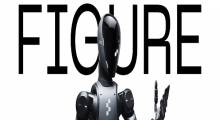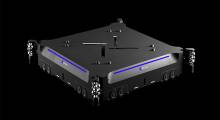WiMi Hologram Cloud Inc., a leading global provider of Hologram augmented reality technology, has developed a self-improvement situational awareness capability for human-robot collaboration.
The new technology makes use of an intelligent digital twin, combining human expertise and experience with the robot's data analysis and simulation prowess. The coupling helps to achieve a deeper understanding and more accurate prediction of the physical system through the perception of its own state and environmental changes. It is also designed to continuously improve performance and efficiency through automatic optimization.
The WiMi technology bolsters the adaptive capability of the intelligent digital twin so that it can sense and adapt to the changing work environment and collaborative situation in real time. The goal: To continuously improve its performance and efficiency, to provide better support, and to optimize resulting solutions.
The scope of WiMi's technology covers a wide range of aspects such as intelligent digital twins, human-robot collaboration, self-improvement, and situational awareness to optimize the performance of a system through modeling and simulation, intelligence and automation, learning and optimization, and real-time sensing and understanding of the system.
The technology utilizes data interaction with real systems to achieve awareness and analysis of the system condition, timely detection of problems, and continuous learning and improvement. The process helps in improving productivity, optimizing resource utilization, and enhancing user experience.
The systems works as follows:
Data collection and analysis: The system collects and analyzes a large amount of real-time data, including sensor data, user feedback, and so on. By analyzing this data, the system can understand its working status, performance indicators, and user needs and feedback, allowing it to identify problems and propose recommendations for improvement.
Model update and optimization: Based on the collected data, the system will update its model and algorithm to adapt to new demands. For example, in intelligent robots, the system continuously optimizes the robot's actions and execution capabilities by analyzing the user's operations and feedback to improve the robot's work efficiency and user experience.
Intelligent decision support: By self-improving situational awareness, the system can analyze the current working state and environmental conditions, predict future development trends, and give appropriate suggestions and decisions. For example, in an intelligent transportation use case, the system can analyze traffic flow and road conditions, predict congestion, and provide optimal route planning and traffic control strategies.
About the Author
Follow Robotics 24/7 on Linkedin
Article topics
Email Sign Up
















